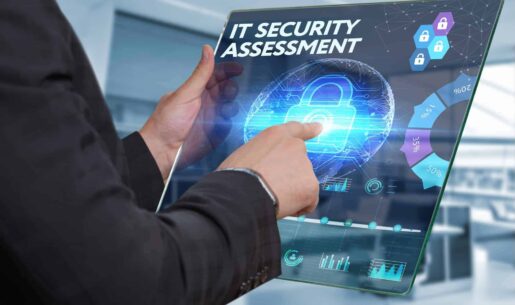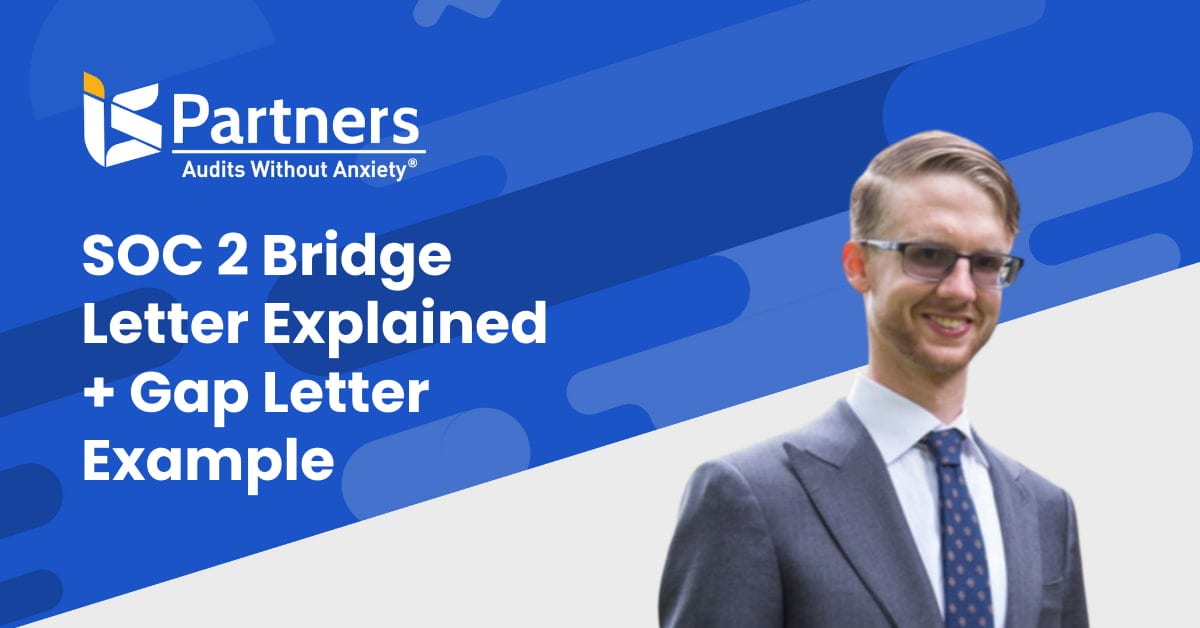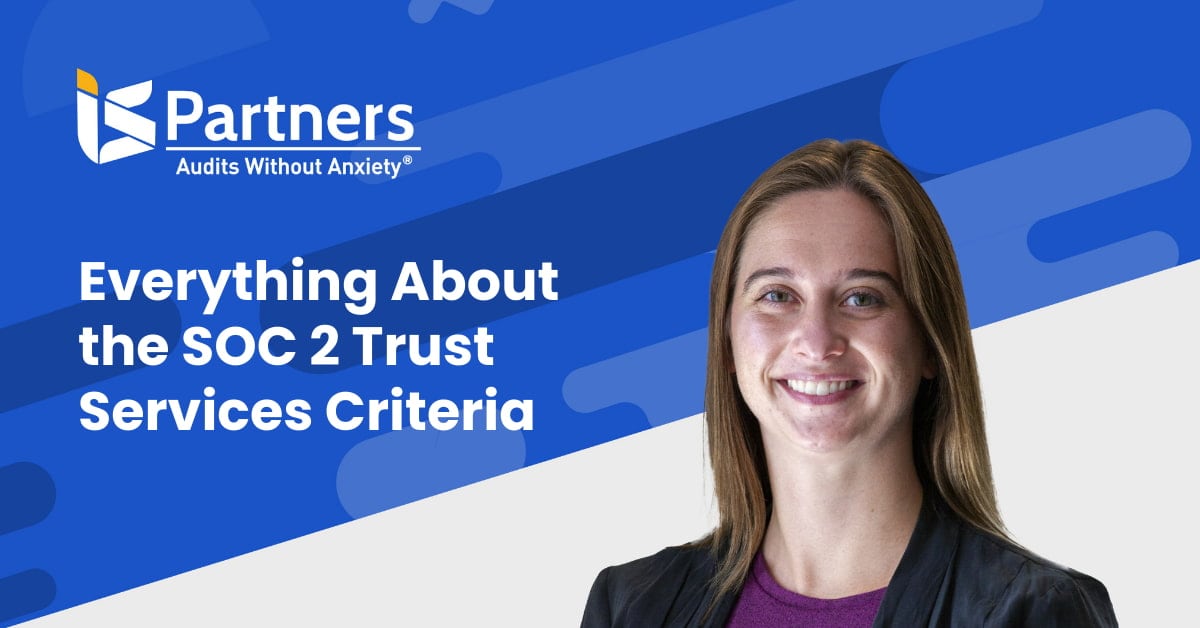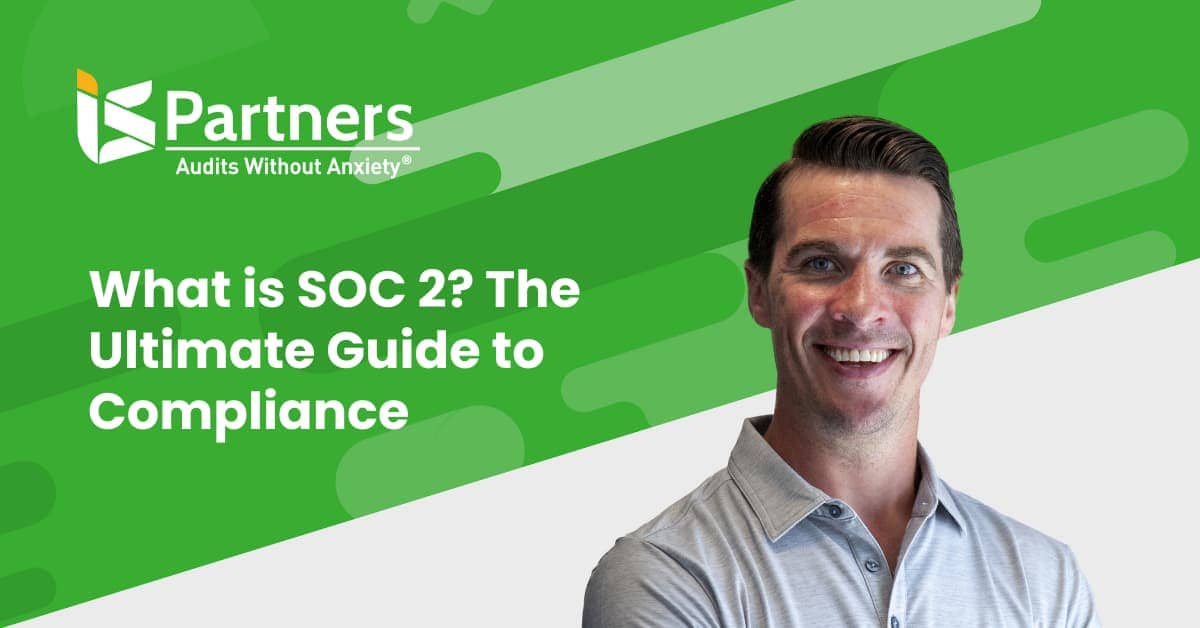With the number and type of cybersecurity threats rapidly increasing—and the fact that they are showing no signs of slowing down—cybersecurity solutions are a hot topic. You’ve most likely heard of SOC for Cybersecurity, especially if your organization outsources one or more aspects of your business to a specialized service organization. In case you haven’t heard about this framework, we are here to bring you up to speed.
With so many sectors— including healthcare, financial, and government—it has never been more important to understand the risks, adopt advanced security controls, and implement tighter cybersecurity assessment measures in order to minimize the damage of data breaches.
What Is SOC for Cybersecurity?
With anticipated security threats like crime-as-a-service (CaaS) and the inherent security risks to the IoT and the supply chain, it seems like every business—in every industry and at every size—is going to have to tighten up cybersecurity. Enterprises are demanding a workable solution to protect their customers’ data, as well as their brand. System and Organization Controls (SOC) for Cybersecurity engagement may be the solution everyone has been scrambling to find to combat the potential attacks.
Any business that works with service organizations, such as those that provide cloud storage and software-as-a-service (SaaS), must ensure that each service organization maintains a safe and secure cyber environment. It helps monitor and manage internal security controls, while keeping stakeholders, business partners and industry regulators regularly informed about the health of your organization’s system.
SOC for Cybersecurity vs SOC 2
SOC for Cybersecurity and SOC 2 are both frameworks under the System and Organization Controls (SOC) reporting platform, but they each serve distinct purposes and have different scope areas. SOC for Cybersecurity focuses specifically on an organization’s overarching cybersecurity risk management program. It aims to provide confidence in an organization’s system by evaluating the effectiveness of the cybersecurity controls, thereby providing assurance that the company’s critical assets are properly safeguarded.
On the other hand, SOC 2 examines a service organization’s non-financial reporting controls as they relate to the Trust Services Criteria, which includes security, availability, processing integrity, confidentiality, and privacy of a system used to process users’ data.
While both are important, SOC for Cybersecurity reports would typically be used by a broader audience interested in understanding an organization’s holistic cybersecurity risk management approach, while SOC 2 reports are typically used by stakeholders such as regulators, customers, and suppliers to gain assurance on specific controls within a service organization’s system. Read more about the SOC 1 vs. SOC 2 difference here.
Key Criteria for the SOC for Cybersecurity Risk Management Framework
The SOC for Cybersecurity framework offers guidelines on the best ways for you to document your own cybersecurity risk management program. It also provides a number of controls and objectives that you may use to stay on track for the best possible cybersecurity.
The AICPA designed SOC for Cybersecurity using two basic criteria:
- Descriptive Criteria. Descriptive criteria provide a narrative description of the company’s current risk management program and approach. This key step gives a baseline measurement of the effectiveness of the current controls within the program.
- Control Criteria. Control criteria are the ideal baseline against each company is able to compare their own baseline measurement within their descriptive criteria to determine where they stand, such as how near to or far from the mark they are.
User entities can choose from a few different pre-existing control criteria, also known as a family of standards, including:
- Trusted Service Criteria for Security, Availability and Confidentiality
- NIST Critical Infrastructure Cybersecurity Framework
- ISO 27001/27002
Regardless of the control criteria that an organization chooses, each family of controls provides a means of communicating relevant and useful information about the effectiveness of the business’s cybersecurity risk management program. Armed with information about the key criteria an expert CPA firm can step into any environment and assess the organization’s cybersecurity posture.
SOC for Cybersecurity Examination
Performed by trusted CPAs, the SOC for Cybersecurity Examination, is an engagement that focuses on an organization’s cybersecurity risk management program. It evaluates two main areas: the business’s cybersecurity risk program and the effectiveness of the controls used to achieve cybersecurity objectives.
The examination presents standards for public accounting firms. These standards allow the firms to report on the cybersecurity programs while also giving clear guidance to CPAs to provide cybersecurity assurance to clients.
The SOC for Cybersecurity examination report will ultimately include:
- Management’s description of their organization’s cybersecurity risk program,
- Management’s assertion about their cybersecurity risk program,
- Practitioner’s report.
Benefits of the SOC for Cybersecurity Assessment
The SOC for Cybersecurity Assessment offers many benefits that only begin with creating a common framework and language that can help you and your IT team instantly get on the same footing.
The System and Organization Controls (SOC) suite of reporting frameworks is a critical addition to your tool kit for a few additional reasons, which include:
Verified Proof of Your Organization’s Diligent Cybersecurity Efforts.
The cybersecurity information discovered can help your senior management team, board of directors, investors, analysts and business partners better understand your IT team’s diligent efforts to maintain a safe computing environment. You can build trust with current customers and prospects who do not require any type of proof and if you do need to provide proof to stakeholders who require it, you are ready to provide it.
Advantage Over the Competition.
During meetings with prospects, you can take the lead over local competitors in your field by offering a SOC attestation. While a SOC for Cybersecurity is not mandatory, your prospects are likely to appreciate your above-and-beyond approach to business precautions in the digital age.
Better Capacity to Prevent Data Breaches.
Avoiding data breaches is probably your number one goal as your organization’s IT leader, and the SOC for Cybersecurity assessment is a crucial way to help steer clear of any possible intrusions. Continually keeping your finger on the pulse of your cybersecurity helps alert you to issues much sooner.
Assurance for Customers & Stakeholders.
Customers are becoming increasingly savvy about data breaches. It is tough to avoid these issues now that data breaches strike such familiar brands and industries that more and more people are potentially affected. Your customers can rest easier knowing you are taking non-mandatory, proactive steps to keep their data safe.
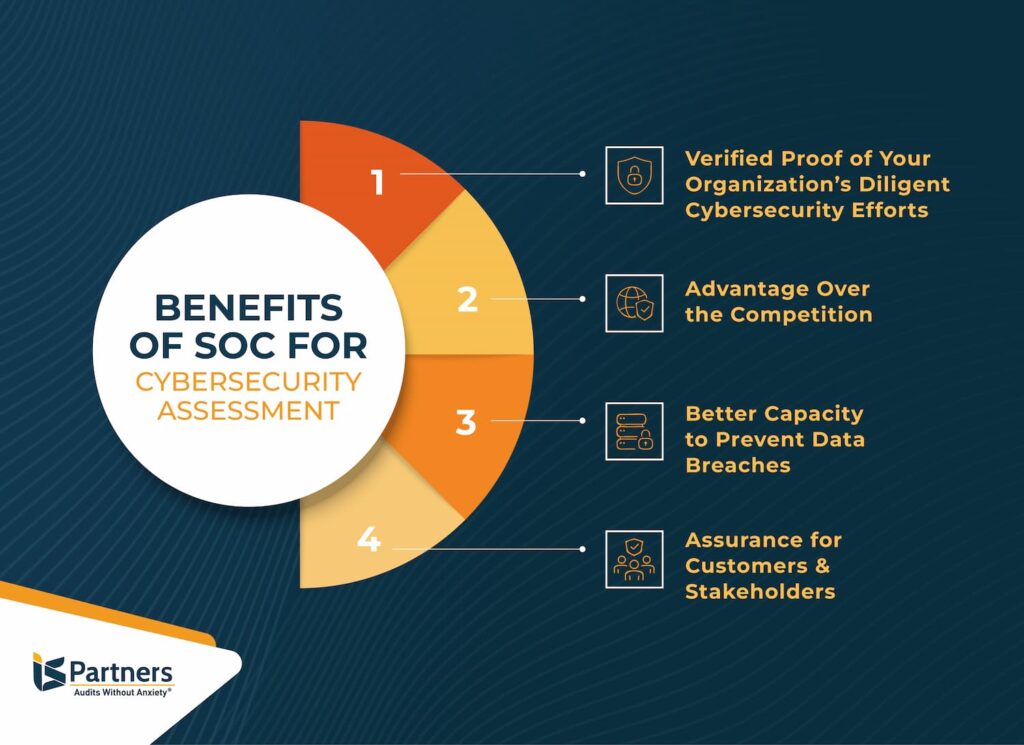
The Importance of Your Auditor’s Role in SOC for Cybersecurity
Scheduling a SOC for Cybersecurity audit is an important part of implementing your framework, making sure it is running properly, and obtaining verified proof that you are doing everything possible to run a safe computing environment in the context of the cyber realm.
Our SOC team at I.S. Partners, LLC. has championed this new step made by the AICPA to help our clients stay ahead of the curve when it comes to online operations. However, it is understandable that you may feel overwhelmed at the prospect of undergoing one more adoption and implementation of more controls. We can help you sort through it all to make the process easier. Read more about the SOC for cybersecurity examination here.
FAQs about SOC for Cybersecurity
SOC 1®, SOC 2® and SOC 3® are registered trademarks of the AICPA (American Institute of Certified Public Accountants). The AICPA® Trust Services Criteria for Security, Availability, Processing Integrity, Confidentiality, and Privacy is copyrighted by the Association of International Certified Professional Accountants. All rights reserved.
